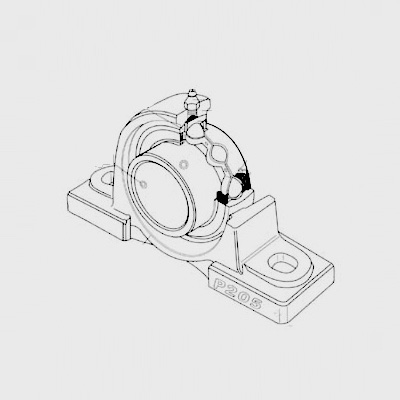
Dec . 06, 2024 23:27 Back to list
double thrust bearing
Understanding Double Thrust Bearings Key Features and Applications
Double thrust bearings are essential components in various mechanical systems, widely used to support axial loads in both industrial and commercial applications. These bearings are uniquely designed to accommodate axial forces from both directions, which makes them particularly useful in numerous engineering applications. In this article, we will delve into the structure, functionality, advantages, and typical applications of double thrust bearings.
Structure of Double Thrust Bearings
A double thrust bearing typically consists of two raceways that allow for the placement of rolling elements, such as balls or rollers. These bearings are usually designed in a symmetrical arrangement, which means that they can handle loads exerted from both sides of the bearing assembly. The key components of a double thrust bearing include the inner and outer rings (raceways), rolling elements (balls or cylindrical rollers), and a cage or retainer that holds the rolling elements in position.
The inner ring is mounted on the rotating shaft, while the outer ring is placed in a fixed position within the housing. The rolling elements circulate between these two rings, reducing friction and wear during operation. This configuration enables the efficient transfer of loads, making double thrust bearings highly effective in managing axial loads.
Functionality and Performance
Double thrust bearings are designed to handle significant axial loads while minimizing frictional losses. This capability makes them ideal for applications where thrust loads act in opposite directions. Their performance hinges on several factors, including material selection, surface finish, and lubrication. High-quality materials, such as stainless steel or carbon steel, are often used for the structure to ensure durability and resistance to wear and corrosion.
Additionally, proper lubrication is essential for optimal performance. Lubricants reduce friction between the rolling elements and raceways, thereby enhancing the bearing's lifespan. Both oil and grease lubricants can be utilized, depending on the operating conditions and application requirements.
double thrust bearing

Advantages of Double Thrust Bearings
One of the primary advantages of double thrust bearings is their ability to manage axial loads efficiently. Unlike single-thrust bearings, which can only accommodate loads from one direction, double thrust bearings provide enhanced load-carrying capability, making them suitable for applications with complex loading conditions.
Moreover, the symmetrical design allows for smoother operation, reducing vibration and noise levels, which is especially beneficial in industries where precision and quiet operation are crucial. Additionally, double thrust bearings typically require less maintenance than their single counterparts, given that they are designed to handle wear more effectively over time.
Applications
Double thrust bearings find applications in a variety of fields. In the automotive industry, they are commonly used in manual transmission systems, where they help support the axial loads created during gear shifts. Additionally, these bearings are integral to electric motors and generators, where they ensure smooth operation under varying loads.
In heavy machinery, double thrust bearings are employed in applications such as cranes and wind turbines, where significant axial loads are common due to lifting and rotational movements. Other uses include conveyor systems, pumps, and various industrial equipment that require reliable axial load support.
Conclusion
In summary, double thrust bearings are critical components that serve to manage axial loads in various mechanical systems effectively. Their unique design, ability to handle loads from both directions, and lower maintenance needs make them indispensable in many industrial applications. Understanding the functionality, advantages, and applications of double thrust bearings paves the way for better design choices in mechanical engineering and design. As industries continue to evolve, the demand for efficient and reliable bearings like the double thrust bearing is expected to grow, further enhancing performance across various applications.
Latest news
-
Premium Deep Groove Ball Bearings | High Speed & Reliability
NewsAug.29,2025
-
Durable Scaffolding Clamps - Secure & Reliable Tube Connectors
NewsAug.28,2025
-
Common Failures in Thrust Ball Bearings and Solutions
NewsAug.22,2025
-
How Tapered Roller Bearings Can Take Shock Loads
NewsAug.22,2025
-
Angular Bearings in High-Precision Spindles
NewsAug.22,2025
-
The Impact of Misalignment on Cylindrical Roller Bearing Performance
NewsAug.22,2025
